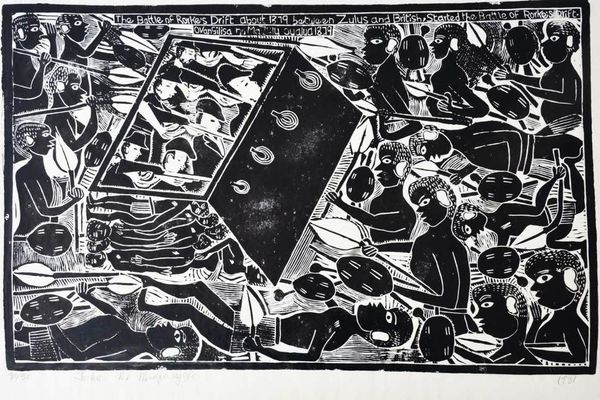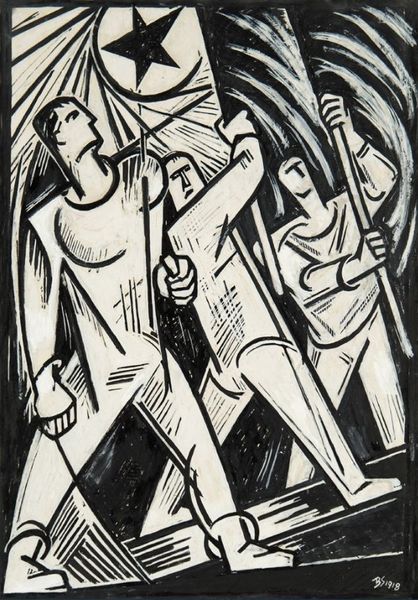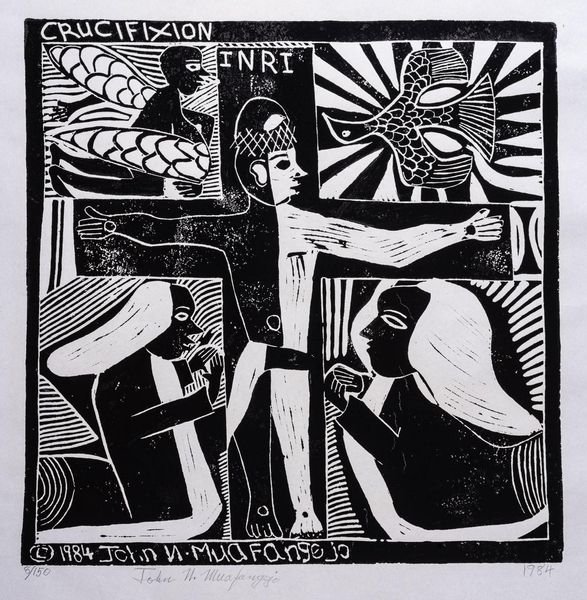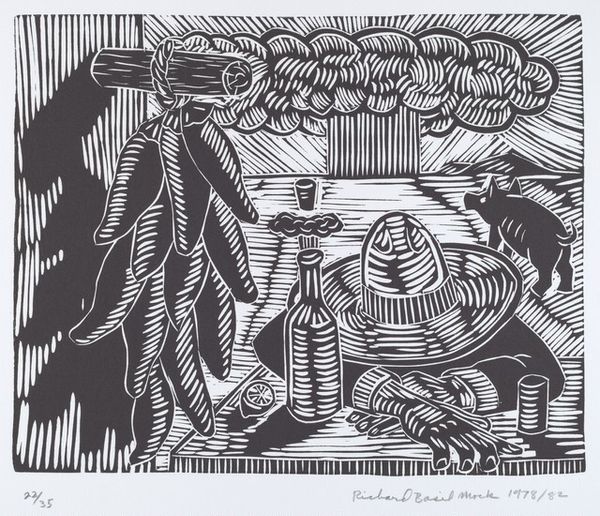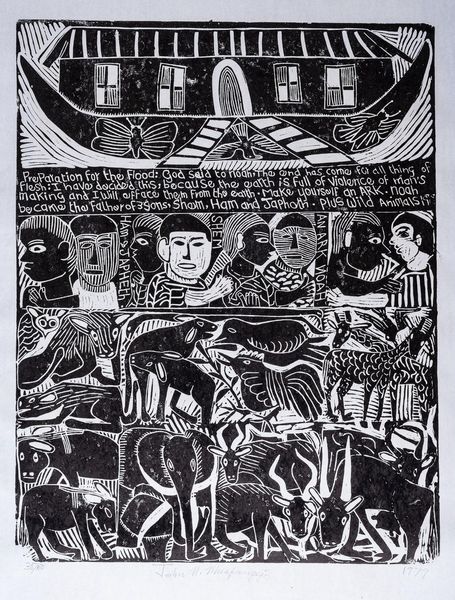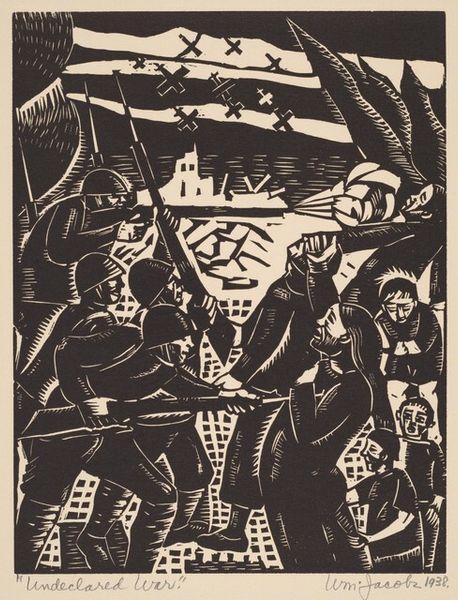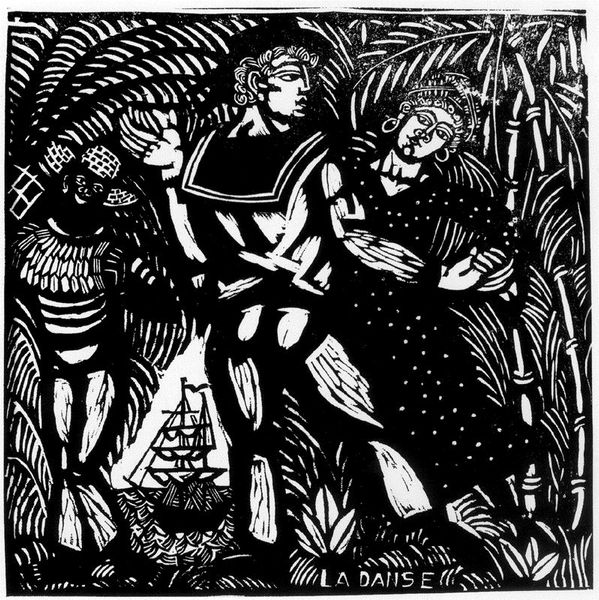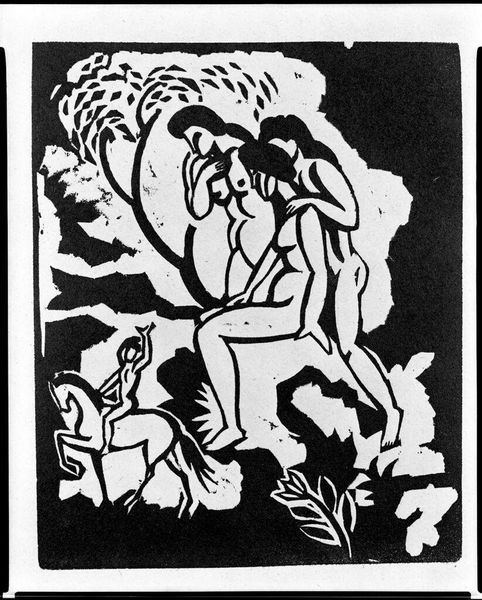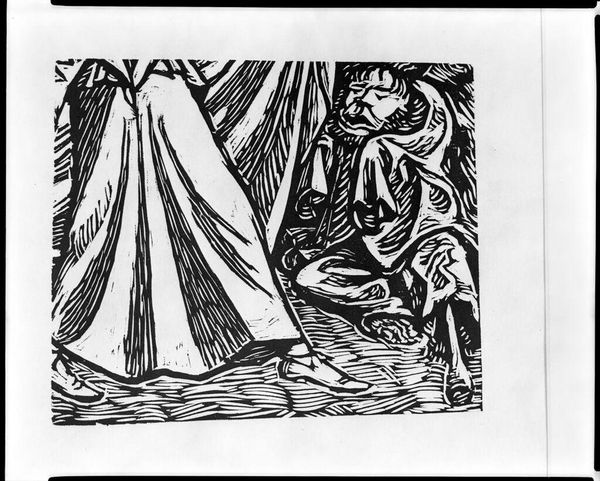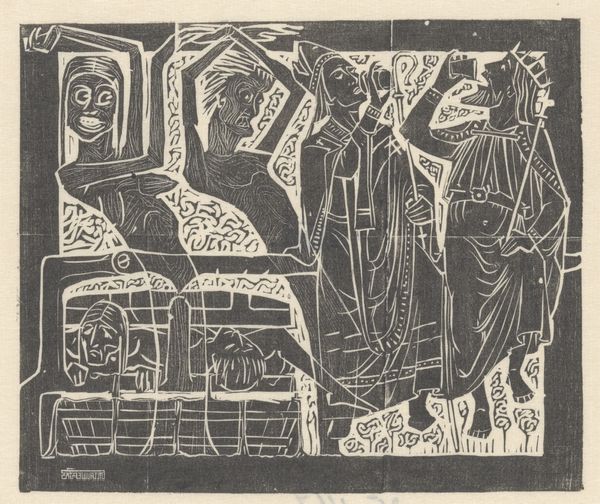
print, woodcut
# print
#
landscape
#
figuration
#
expressionism
#
woodcut
Copyright: Public domain US
Curator: Before us hangs Max Pechstein's 1923 woodcut, "Zwei Fischer mit Netz," or "Two Fishermen with Net." Editor: It strikes me as brutally graphic, almost stark. The heavy black lines against the white paper—it's visually very impactful, raw, and even feels a bit bleak. Curator: The rawness certainly fits the Expressionist movement, to which Pechstein belonged. But consider also the historical context. The 1920s in Germany were a time of great economic hardship and social upheaval following World War I. Editor: And how might that inform the reading of formal properties? The simplification of form? The emotional charge created by stark contrast of blacks and whites? The bodies, their muscular form defined by thick strokes, holding that heavy net… it speaks of hard labour. Curator: Precisely. This piece, like many from the Weimar Republic, reveals a concern for the working class and their struggle against the harsh realities of their time. There's a sense of community, too, the men working together, intertwined with a common purpose. But this focus on manual labor was not just an observation, it was almost an invocation... a visual statement advocating for a return to fundamental values and resilience in an uncertain era. Editor: And from a strictly aesthetic view, you see how Pechstein plays with negative space, defining forms not just with the cut marks, but with what is left untouched. The masts of the boats become almost geometric abstractions, contrasting with the figurative form of the fishermen. It creates a tense dynamism. Curator: That interplay highlights Expressionism’s focus, too, on emotional truth over mere pictorial accuracy. Look how the figures' faces seem weary, almost etched with hardship. The distortion and abstraction only enhance the emotional weight, underlining their resilience and solidarity. Editor: I find the almost primitive feel quite compelling—that raw, almost aggressive application of form… The net itself seems to capture the eye with a swirling rhythm. Curator: So much can be learned, not just by appreciating art as aesthetic experience, but understanding its social genesis. It opens our eyes to its political messages, and historical resonances. Editor: While I will focus on form and composition as conveyors of expression. The interplay! In this woodcut by Pechstein the sharp formal qualities and their sociohistorical dimensions cannot exist independently.
Comments
No comments
Be the first to comment and join the conversation on the ultimate creative platform.

